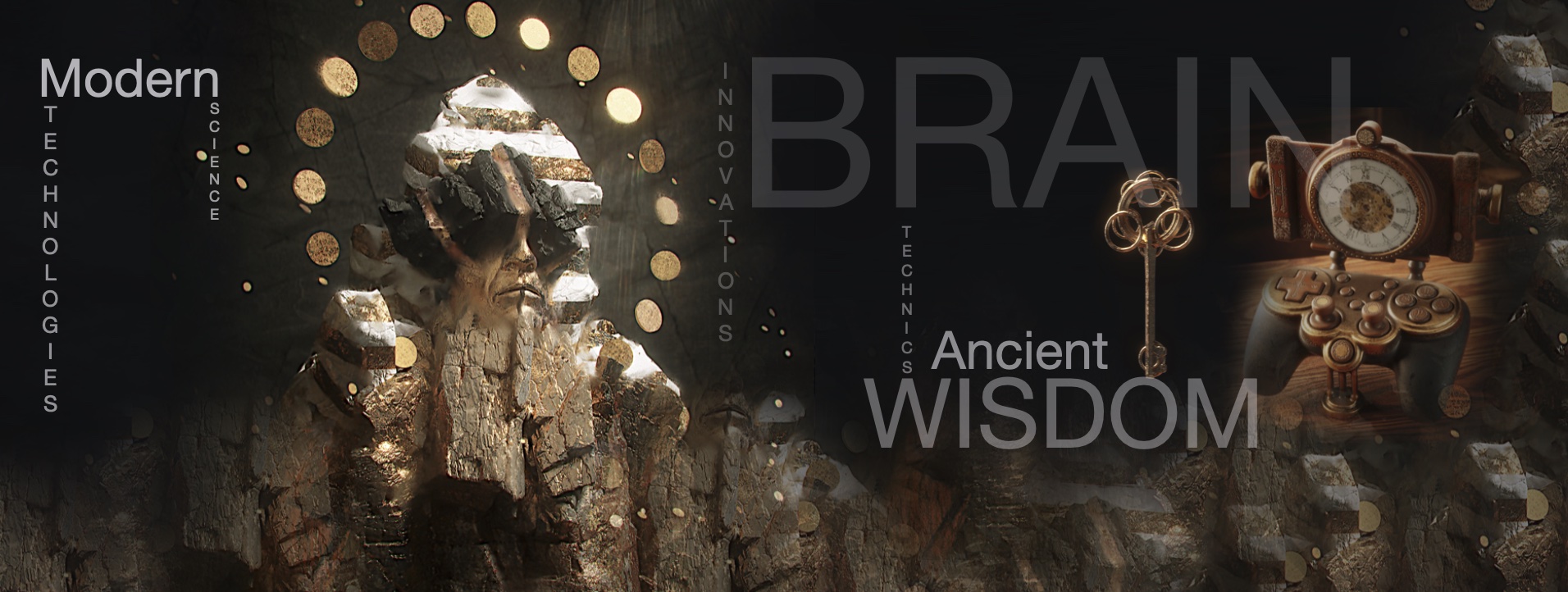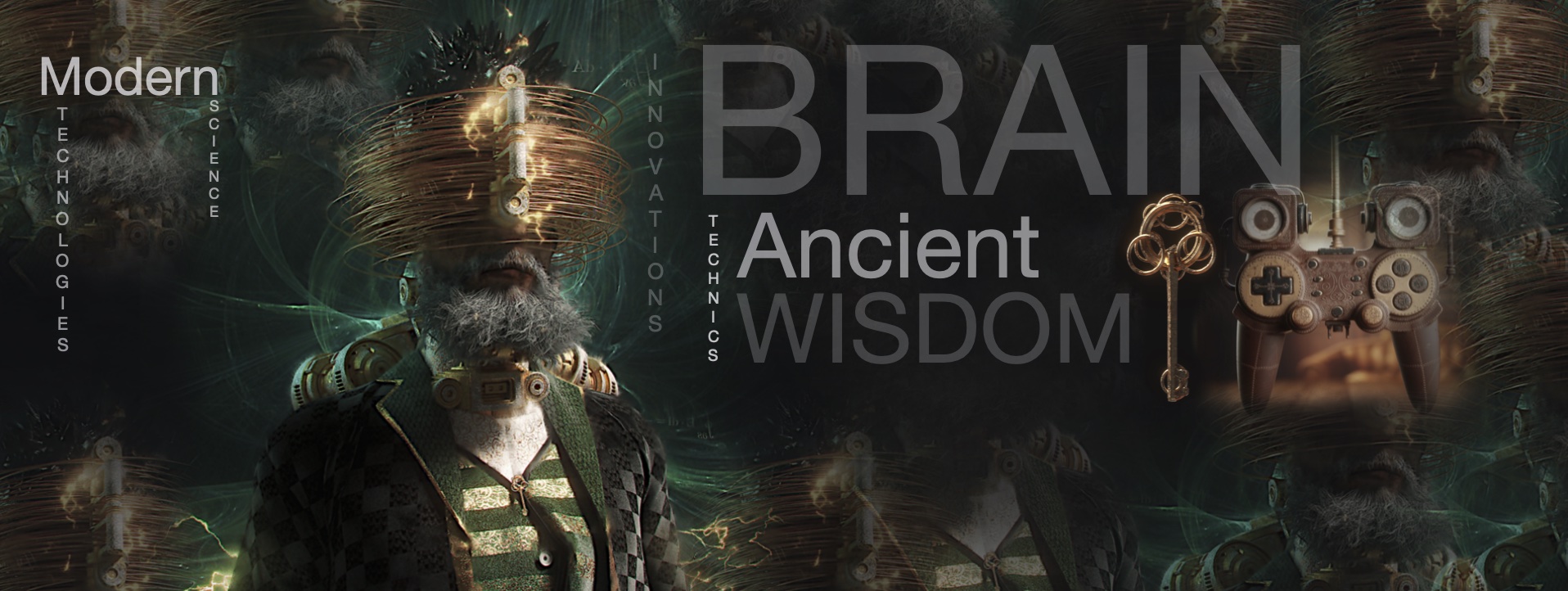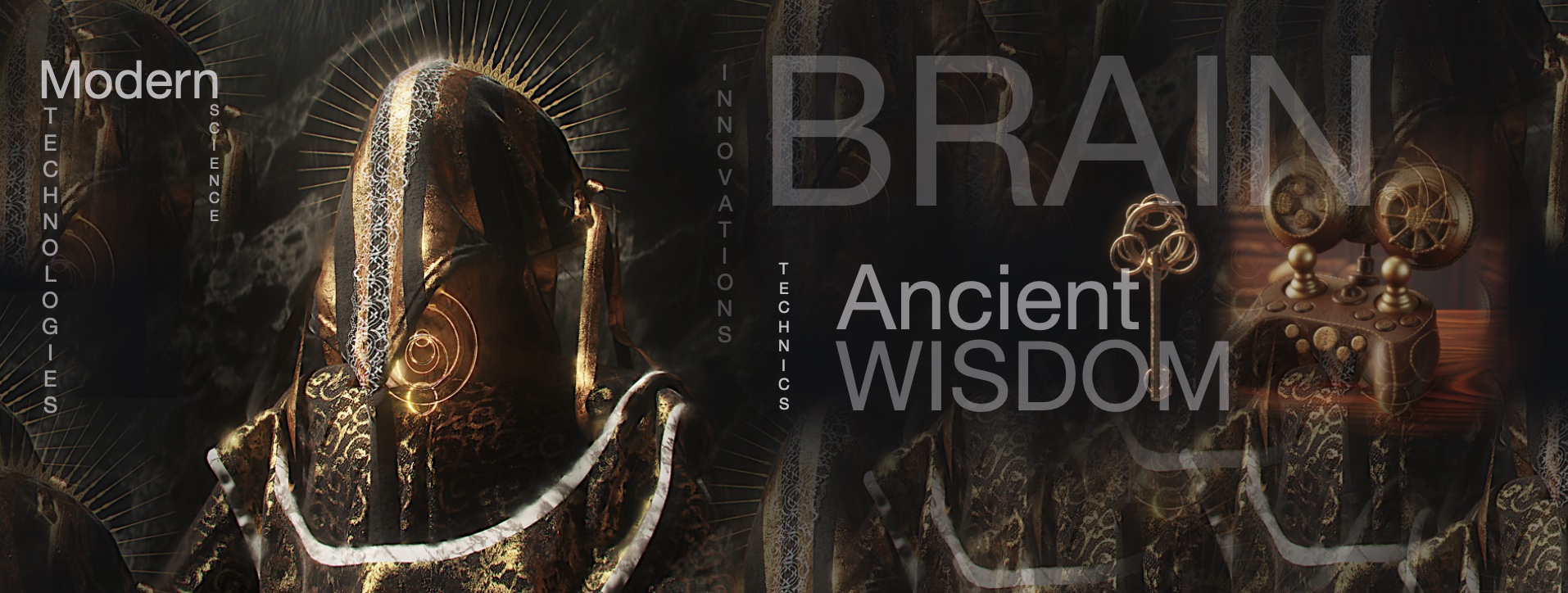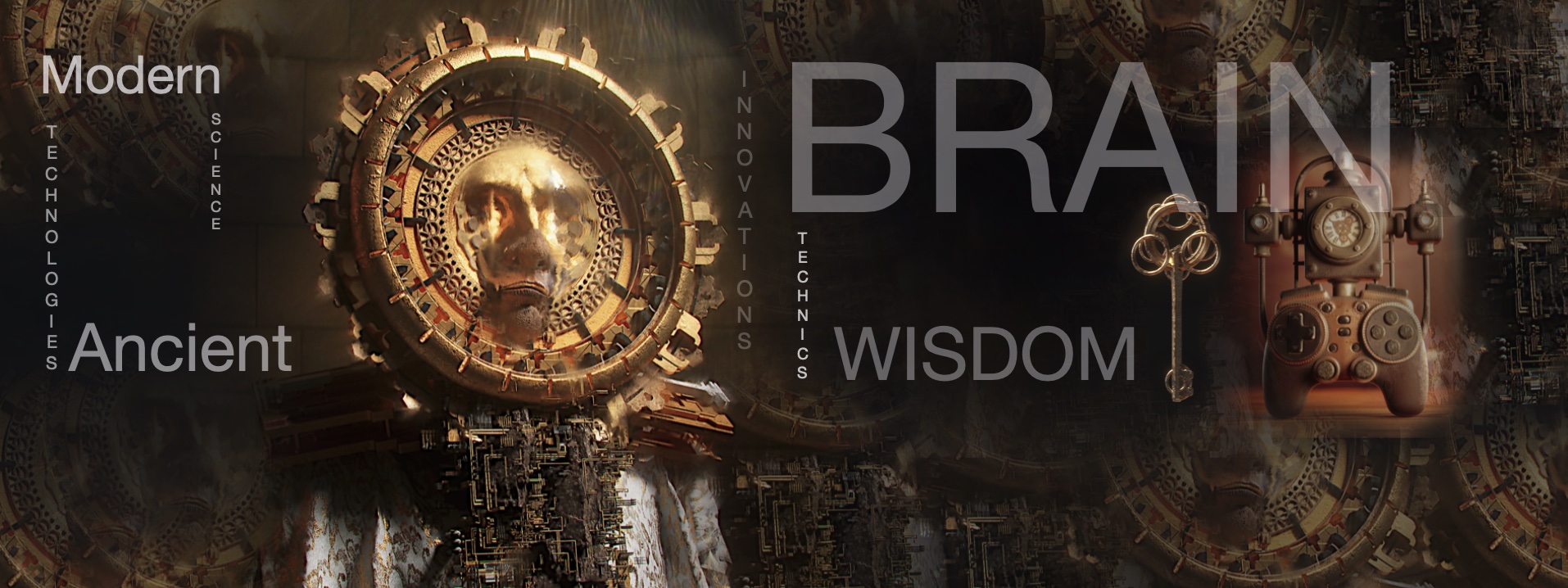




Holographic brain modulation uses holographic projections to activate or suppress neurons, replicating real brain activity. By combining calcium imaging, optogenetics, and holographic microscopy, this technique enables precise 3D neural stimulation and imaging with high spatiotemporal resolution, advancing neural circuit research.
Researchers at Washington University developed AhSonogenetics, a noninvasive wearable ultrasound device that precisely modulates neurons using holographic acoustic technology and genetic engineering. This method allows targeted neuromodulation across multiple brain regions, offering potential treatments for neurodegenerative diseases like Parkinson’s. The device is low-cost, adaptable, and enhances research on neural circuits and disorders.
www.thetatech.online

Our next-generation neuromodulation technology is at the forefront of brain science and rehabilitation, unlocking new treatment possibilities for aging and injured brains.
Our advanced noninvasive neuromodulation technology combines holographic ultrasound and genetic engineering to precisely stimulate neurons across multiple brain regions simultaneously. Designed for both clinical and research applications, our system features: 🔹 Airy Beam-Enabled Binary Acoustic Metasurface – Precisely steers ultrasound waves with high spatial resolution for targeted neuromodulation. 🔹 Wearable, Noninvasive Ultrasound Device – Comfortable, adjustable design tailored for patient and research needs. 🔹 Multi-Region Brain Stimulation – Enables simultaneous targeting of affected areas, crucial for conditions like Parkinson’s disease, neurodegenerative disorders, and brain trauma recovery. 🔹 Real-Time Control & Monitoring – AI-driven integration for adaptive neuromodulation, optimizing treatment efficacy. 🔹 Cost-Effective & Scalable – Affordable, easily manufactured, and adaptable for widespread clinical and commercial use.
How They Interact in the Brain The mind is a product of brain activity, shaped by neural connections, electrical impulses, and biochemical interactions. Neuromodulation influences these processes by regulating neuronal activity, enhancing or suppressing specific brain functions to improve cognition, mood, and motor control. By combining advanced neuromodulation techniques with AI-driven monitoring, researchers and clinicians can fine-tune brain activity, optimize mental performance, and accelerate rehabilitation—bridging the gap between the mind and its biological foundation.

Neuromodulation technologies like tDCS, TMS, and ultrasound-based methods stimulate or inhibit specific brain regions, influencing how neurons communicate.

By adjusting the activity of neurons, neuromodulation can increase or decrease the release of dopamine, serotonin, and GABA, impacting mood, learning, and motor function.

Enhancing Neuroplasticity – Noninvasive stimulation promotes the brain’s ability to rewire and adapt, crucial for recovery from injuries, neurodegenerative diseases, and cognitive enhancement.

Restoring Brain Balance – Disorders like depression, Parkinson’s disease, and chronic pain often involve imbalanced neural activity. Neuromodulation restores normal function by reactivating or suppressing targeted brain areas.
 1
1
STIMULATION
 2
2
MODULATION
 3
3
ENHANCING
 4
4
EMPOWERMENT


How Neuromodulation Shapes Brain Chemistry Neurotransmitters are the chemical messengers of the brain, responsible for regulating mood, cognition, motor control, and overall neural function. Neuromodulation technologies—such as transcranial direct current stimulation (tDCS), transcranial magnetic stimulation (TMS), and focused ultrasound—adjust neuronal activity to influence the release and balance of key neurotransmitters, including dopamine, serotonin, and gamma-aminobutyric acid (GABA).


How Neuromodulation Affects Key Neurotransmitters: Dopamine: Known as the "reward neurotransmitter," dopamine is critical for motivation, pleasure, and motor function. Neuromodulation techniques can increase dopamine release in areas such as the prefrontal cortex and basal ganglia, benefiting individuals with Parkinson’s disease, depression, and addiction by improving movement, motivation, and emotional regulation. Serotonin: This neurotransmitter plays a key role in mood regulation, sleep, and anxiety control. Stimulating or inhibiting specific brain regions with TMS or tDCS can enhance serotonin availability, offering noninvasive treatment options for depression, anxiety disorders, and even PTSD. GABA (Gamma-Aminobutyric Acid): As the brain's primary inhibitory neurotransmitter, GABA is essential for reducing excessive neuronal activity and maintaining balance. Neuromodulation can enhance GABAergic function, which is particularly beneficial in epilepsy, chronic pain, and anxiety disorders, where excessive excitatory activity leads to dysfunction.


The Broader Impact on Brain Function and Therapy By precisely modulating neurotransmitter activity, neuromodulation offers a targeted, noninvasive way to restore balance in disrupted neural circuits. This has profound implications for both clinical treatment and cognitive enhancement, as fine-tuning neurotransmitter levels can improve mood stability, learning capacity, motor coordination, and mental resilience. As neuromodulation technologies continue to evolve, their ability to regulate neurotransmitter function opens new possibilities for personalized medicine, rehabilitation, and mental health interventions, transforming the way we approach brain disorders and cognitive optimization.
A New Hope for Recovery.

Lock-in syndrome leaves patients conscious but unable to move or communicate. Our cutting-edge neuromodulation technology offers a breakthrough solution by stimulating neural pathways, promoting brain plasticity, and enhancing communication capabilities. By leveraging noninvasive techniques like tDCS and TMS, we aim to restore motor function, improve cognitive engagement, and reconnect individuals with their surroundings. Our mission is to empower recovery, providing innovative solutions that bring renewed possibilities for those affected by severe neurological conditions.

Advancements in neuromodulation are revolutionizing care for vegetative coma patients, offering new pathways to restore consciousness and improve neurological function. By stimulating specific brain regions, these innovative technologies can reactivate neural networks, enhance brain plasticity, and accelerate recovery. Neuromodulation bridges the gap between coma and recovery, offering noninvasive, targeted solutions to restore awareness, motor function, and cognitive abilities. With continuous advancements, these therapies bring renewed hope for coma patients.

Neuromodulation Approaches: Transcranial Magnetic Stimulation (TMS) to improve responsiveness and cognitive function in coma patients.

Neuromodulation Approaches: Transcranial Direct Current Stimulation (tDCS) to promote brain network reorganization.

Neuromodulation Approaches: Focused Ultrasound Stimulation to activate deep brain structures, responsible for consciousness regulation.

Neuromodulation Approaches: Vagus Nerve Stimulation (VNS) o boost brain connectivity and improve arousal levels in unresponsive patients.
Restoring Brain Balance: Neuromodulation for Treating Neurological and Psychiatric Disorders The brain relies on a delicate balance of neural activity to regulate mood, movement, pain perception, and cognition. However, disorders such as depression, Parkinson’s disease, chronic pain, epilepsy, and anxiety arise when this balance is disrupted, leading to either excessive neural inhibition or overactivity in key brain regions. Neuromodulation therapies—including transcranial magnetic stimulation (TMS), transcranial direct current stimulation (tDCS), vagus nerve stimulation (VNS), and focused ultrasound—offer targeted, noninvasive solutions to restore optimal neural function, providing relief from debilitating symptoms.
Reactivating Underactive Brain Regions in Depression & Mood Disorders Major depressive disorder (MDD) is often linked to reduced activity in the prefrontal cortex, the brain region responsible for emotional regulation and decision-making. TMS and tDCS stimulate the dorsolateral prefrontal cortex (DLPFC), helping to restore normal neural firing patterns, leading to improved mood, motivation, and cognitive function. This noninvasive approach is particularly beneficial for individuals resistant to medication-based treatments.
Parkinson’s disease results from dopamine depletion, which disrupts motor control circuits in the basal ganglia, leading to tremors, rigidity, and slowed movement (bradykinesia). Deep brain stimulation (DBS) and focused ultrasound precisely target these dysfunctional areas, reducing symptoms by modulating abnormal neural firing patterns. Emerging noninvasive methods, like low-intensity ultrasound and personalized brain stimulation algorithms, are being developed to fine-tune motor function with greater precision.
Chronic pain conditions, including fibromyalgia, neuropathic pain, and migraines, often involve overactive pain signaling pathways in the central nervous system. Neuromodulation techniques like tDCS, TMS, and VNS reduce pain perception by altering activity in the somatosensory cortex and pain-processing networks. By modulating neurotransmitter release (e.g., increasing endorphins and reducing glutamate activity), these therapies offer long-lasting pain relief without the side effects of opioids.
Seizures in epilepsy result from synchronized hyperactivity of neurons, causing uncontrollable electrical storms in the brain. Vagus nerve stimulation (VNS) and responsive neurostimulation (RNS) help disrupt these abnormal patterns, reducing seizure frequency and severity. In anxiety disorders, heightened amygdala activity and weakened prefrontal regulation lead to excessive fear responses. Neuromodulation strengthens the brain’s inhibitory control, reducing anxiety and stress responses.
Advancements in AI-driven neurostimulation, real-time brain mapping, and adaptive biofeedback are making treatments more personalized and responsive. Moving beyond one-size-fits-all medications, neuromodulation offers precision-based, noninvasive solutions to restore brain function. By rebalancing neural activity, it not only alleviates symptoms but also enhances resilience, cognition, and quality of life. This revolutionary approach is transforming mental health and neurological care, paving the way for more effective, flexible, and low-risk treatments.
Neuromodulation technologies, such as transcranial direct current stimulation (tDCS), transcranial magnetic stimulation (TMS), and ultrasound-based methods, are revolutionizing the way we influence brain activity. These techniques work by stimulating or inhibiting specific neural circuits, directly impacting how neurons communicate and process information. Each brain region is responsible for different cognitive, motor, and emotional functions. When neurological disorders, injuries, or age-related decline disrupt these circuits, neuromodulation offers a noninvasive solution to restore balance and optimize function. By selectively influencing neural circuits, neuromodulation reconfigures brain activity, enhances neuroplasticity, and enables more precise interventions for mental health, cognitive enhancement, and neurological rehabilitation. These advancements bring us closer to personalized brain treatments, bridging the gap between neuroscience research and real-world clinical applications.

applies low electrical currents to modulate neuronal excitability, enhancing learning, memory, and recovery in conditions such as stroke, depression, chronic pain.

uses magnetic pulses to either activate or suppress targeted areas, making it effective for treating depression, anxiety, and movement disorders like Parkinson’s disease.

employs focused sound waves to stimulate deep brain regions with high precision, offering a promising alternative for conditions previously treatable only through invasive procedures.
Harnessing Noninvasive Stimulation for Brain Adaptation and Recovery. Neuroplasticity—the brain’s ability to reorganize itself by forming new neural connections—is fundamental to learning, memory, recovery from brain injuries, and overall cognitive health. Noninvasive neuromodulation techniques, such as transcranial direct current stimulation (tDCS), transcranial magnetic stimulation (TMS), and focused ultrasound, play a key role in enhancing neuroplasticity by stimulating targeted brain regions and strengthening neural pathways. These technologies promote synaptic remodeling, optimize brain function, and improve resilience against neurodegenerative diseases.

Neuromodulation techniques enhance long-term potentiation (LTP) and long-term depression (LTD), mechanisms that regulate how neurons strengthen or weaken connections. Repeated stimulation of specific brain regions encourages the growth of new synaptic connections, improving memory, learning efficiency, and cognitive adaptability.

Following traumatic brain injuries (TBI) or strokes, damaged neural circuits can be reactivated and rerouted through noninvasive brain stimulation. tDCS and TMS have been shown to facilitate motor recovery and language restoration in stroke patients by enhancing compensatory brain activity in unaffected regions.

Fighting Neurodegenerative Diseases. In conditions like Alzheimer’s, Parkinson’s, and multiple sclerosis (MS), neuroplasticity is disrupted, leading to cognitive decline and motor impairment. Neuromodulation stimulates neuroprotective processes, enhancing neural repair and slowing degeneration

Boosting Cognitive Performance & Resilience Noninvasive neurostimulation enhances memory, decision-making, and focus. tDCS to the DLPFC improves executive function and creativity, benefiting athletes, students, and professionals under pressure.
thetabrain.eu
For centuries, spiritual traditions have described the "Third Eye" as the gateway to higher consciousness, intuition, and enlightenment. Rooted in ancient wisdom from Hinduism, Buddhism, and esoteric traditions, the Third Eye—often associated with the pineal gland—is believed to enhance perception beyond the physical realm, unlocking deeper awareness and insight.
Today, modern neuroscience and neuromodulation techniques offer a scientific approach to achieving similar heightened states of consciousness. Technologies like transcranial direct current stimulation (tDCS), transcranial magnetic stimulation (TMS), and neurofeedback help optimize brainwave activity, enhance cognitive function, and improve focus, memory, and introspection.
By combining meditation, breathwork, and modern neurostimulation, individuals can unlock greater mental clarity, intuition, and emotional balance—bridging ancient spiritual traditions with cutting-edge brain science. This synergy offers a powerful pathway to self-discovery, cognitive enhancement, and a deeper connection to the mind’s true potential.

Cutting-edge technology is transforming care for patients with damaged brain (vegetative state included), enhancing neurological monitoring, brain stimulation, and neurorehabilitation. These innovations help assess brain activity, promote recovery, and improve patient outcomes. These next-generation technologies offer new hope for coma patients, enabling early detection of recovery potential, brain reactivation, and improved patient outcomes through precision-based, noninvasive interventions.

Noninvasive Neuromodulation (TMS & tDCS) Transcranial Magnetic Stimulation (TMS): Stimulates targeted brain regions to restore consciousness. tDCS (Transcranial Direct Current Stimulation): Enhances neuroplasticity, aiding in cognitive and motor recovery.

Focused Ultrasound Brain Stimulation utilizes low-intensity ultrasound to target deep brain structures, supporting recovery. Non-invasive Vagus Nerve Stimulation (VNS) and Peripheral Stimulation optimize nervous system function, enhancing brain responsiveness.

AI-Driven Brain-Computer Interfaces (BCIs). Uses EEG and fMRI-based neurofeedback for precise monitoring.

AI-Powered Neurorehabilitation Systems. Adaptive neurofeedback platforms track brain activity in real time, adjusting therapy for optimal recovery.

Real-Time Brain Monitoring & Imaging with Advanced fMRI, EEG, and PET scans assess brain function, tracking progress and guiding treatment.